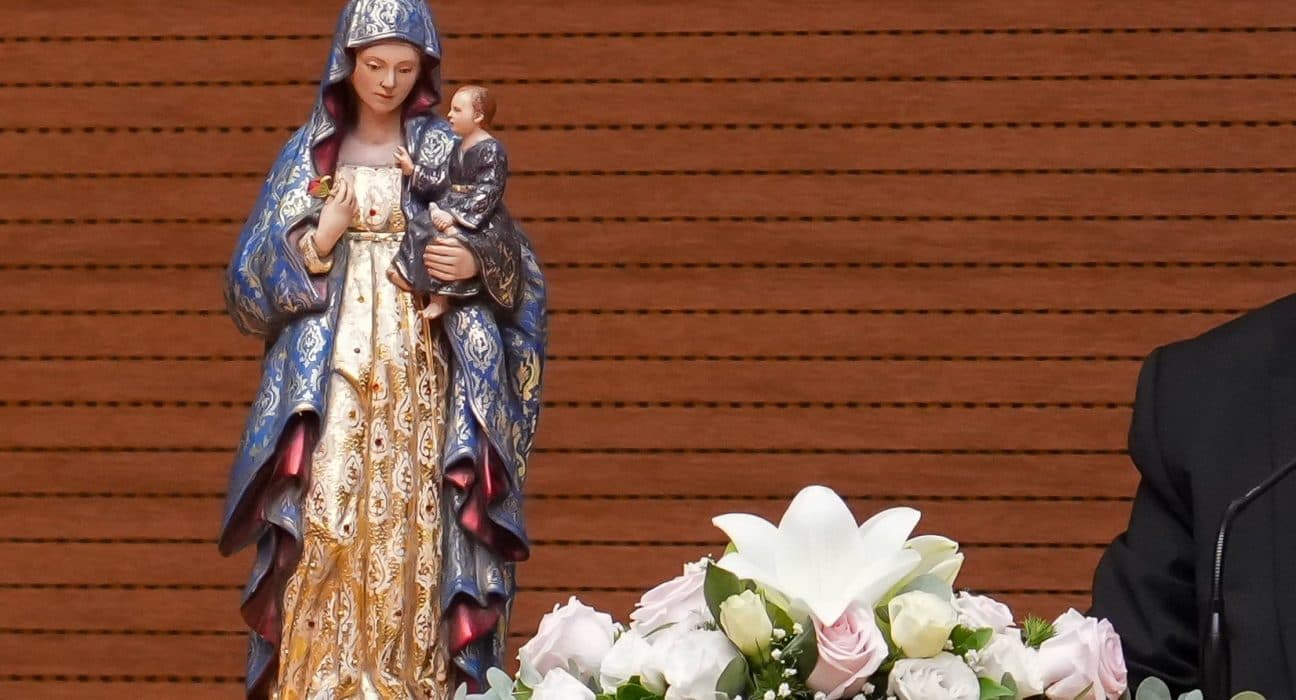We're loading the full news article for you. This includes the article content, images, author information, and related articles.
A definitive ruling from the Holy See's top doctrinal office discourages titles like 'Co-redemptrix,' aiming to unify theological understanding and curb doctrinal drift for millions of Catholics in Kenya and worldwide.

VATICAN CITY – The Vatican’s Dicastery for the Doctrine of the Faith (DDF) issued a significant theological clarification on Tuesday, 4 November 2025, EAT, concerning the role of the Blessed Virgin Mary in salvation. The doctrinal note, titled Mater Populi Fidelis ('Mother of the Faithful People'), reaffirms that Jesus Christ is the sole and unique Redeemer, while carefully defining Mary's cooperative role as subordinate and dependent on her Son. The document, approved by Pope Leo XIV on 7 October 2025, directly addresses and discourages the use of certain Marian titles, such as 'Co-redemptrix' and 'Mediatrix of all Graces', which have been the subject of theological debate for decades.
The central thrust of the DDF's note is to prevent any perception that Mary is on the same level as Jesus Christ in the act of redemption. Cardinal Víctor Manuel Fernández, the Prefect of the DDF, explained that while titles like 'Co-redemptrix' have been used with loving intent throughout Church history, they risk "eclipsing the exclusive role of Jesus Christ" and creating confusion among the faithful. The document states that such terms are not appropriate for defining Mary's cooperation in salvation. It reinforces the teaching of the Second Vatican Council, particularly in the dogmatic constitution Lumen Gentium, which describes Mary's role as a unique form of cooperation that flows entirely from Christ's merits and does not add to or subtract from His singular mediation.
This clarification from Rome carries significant weight for Kenya, a nation where Christianity is the majority religion for over 85% of the population, with the Catholic Church being the largest single denomination. According to the 2019 national census, over 9.7 million Kenyans identify as Catholic. Devotion to the Virgin Mary is a prominent feature of Kenyan Catholic life, most visibly demonstrated by the thousands of pilgrims who visit the National Marian Shrine in Subukia, Nakuru County, each year. The shrine, known as the 'Village of Mary, Mother of God', was established following a call by Pope John Paul II during his 1980 visit and has become a major centre for prayer and devotion. Just last month, on 4 October 2025, Kenyan Catholic Bishops formally dedicated the nation to the maternal care of the Virgin Mary during the National Prayer Day at the shrine.
The Vatican's directive will guide bishops, priests, and catechists in Kenya to ensure that sermons and teachings on Mary align with the universal Church's clarified position. The aim is to foster a Marian devotion that is deeply rooted in scripture and tradition, yet always Christ-centered, preventing exaggerations that could misrepresent core Catholic doctrine. The note affirms Mary's powerful role as an intercessor and mother but stresses that she is not a dispenser of grace in her own right; rather, she directs the faithful to her Son, the one source of all grace.
The DDF's document is seen as a response to various movements over the past several decades that have petitioned the Holy See to formally define Mary's role as 'Co-redemptrix' as a fifth Marian dogma. Successive popes, including Benedict XVI and Francis, have expressed reservations about the title, fearing it could be theologically misleading and detrimental to ecumenical relations with other Christian denominations, particularly Protestants, who often view Marian devotion with caution. By issuing this definitive note, the Vatican seeks to settle the matter, providing clear theological guardrails to preserve the Christological center of the Catholic faith. The document encourages the use of titles that emphasize Mary's motherhood, such as 'Mother of God' and 'Mother of the Faithful', which are theologically precise and universally accepted within the Church.
Keep the conversation in one place—threads here stay linked to the story and in the forums.
Other hot threads
E-sports and Gaming Community in Kenya
Active 7 months ago
Popular Recreational Activities Across Counties
Active 7 months ago
The Role of Technology in Modern Agriculture (AgriTech)
Active 7 months ago
Investing in Youth Sports Development Programs
Active 7 months ago